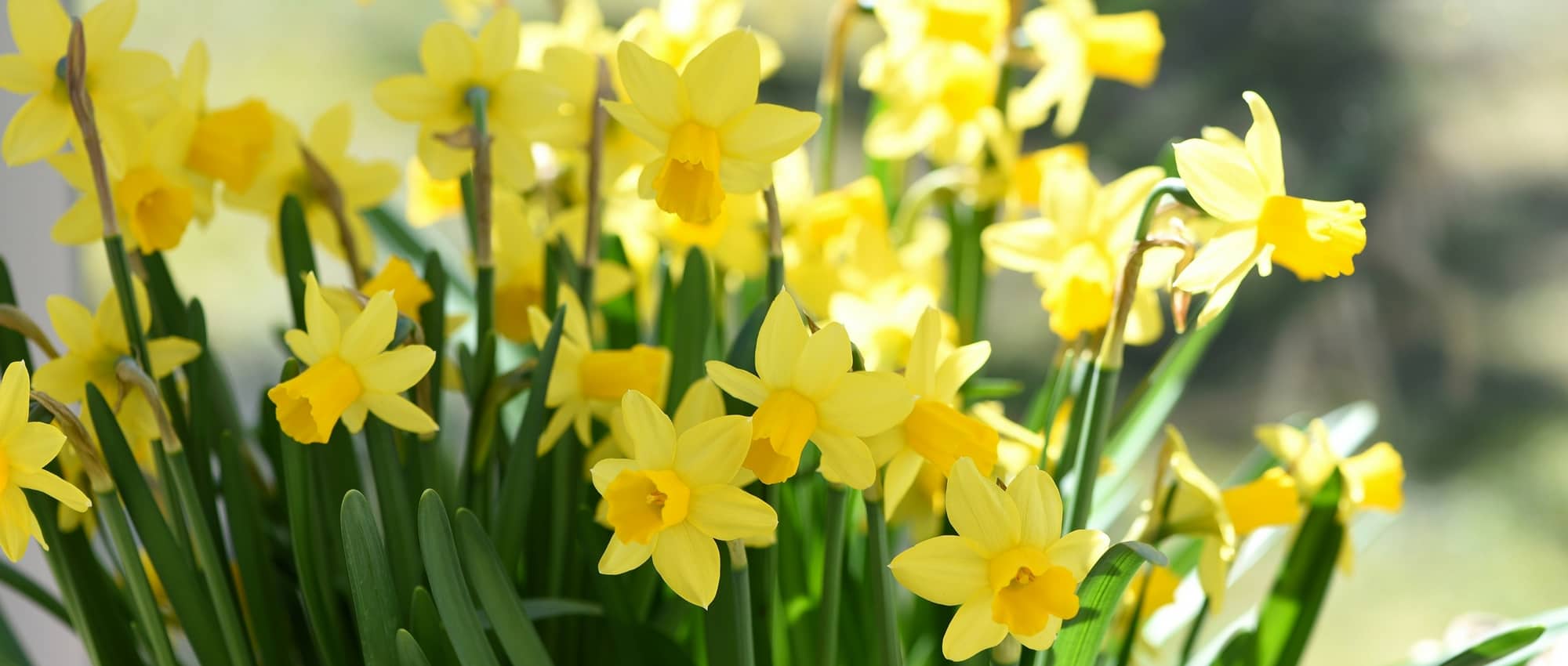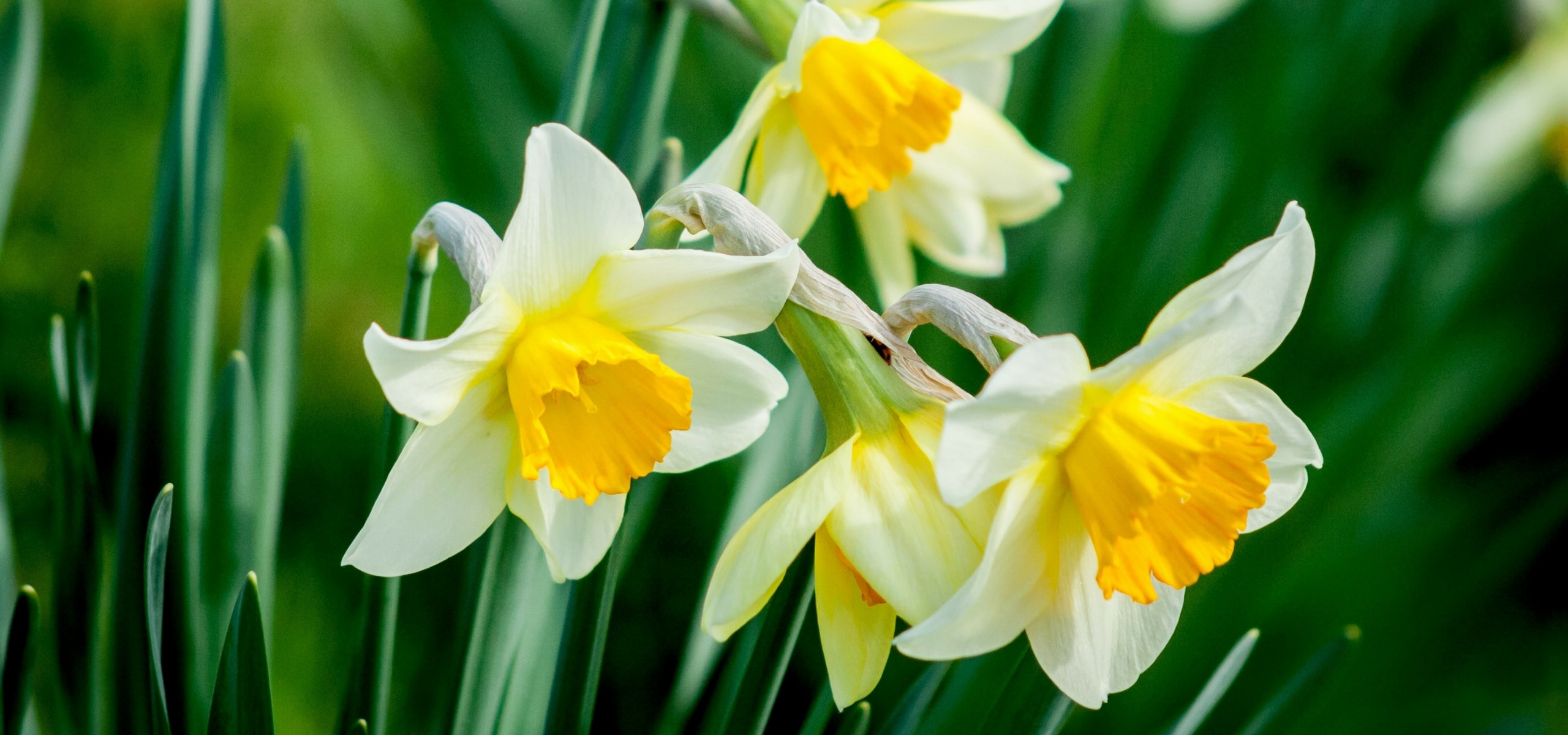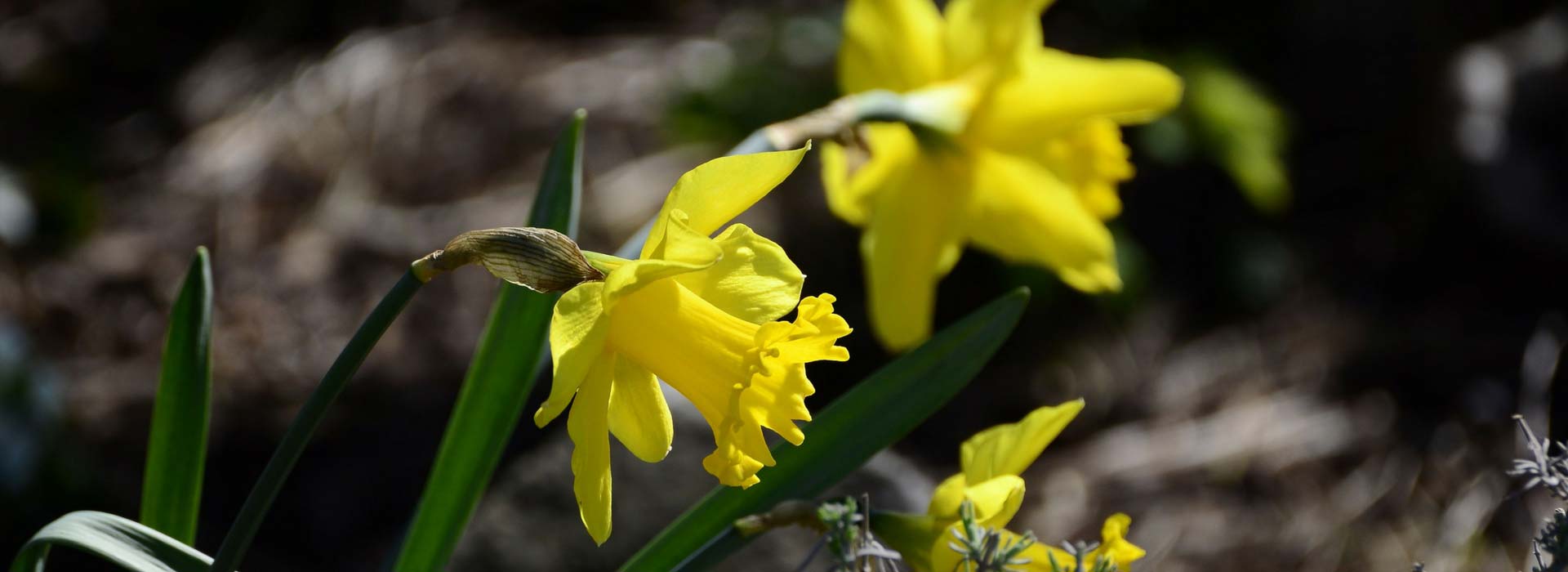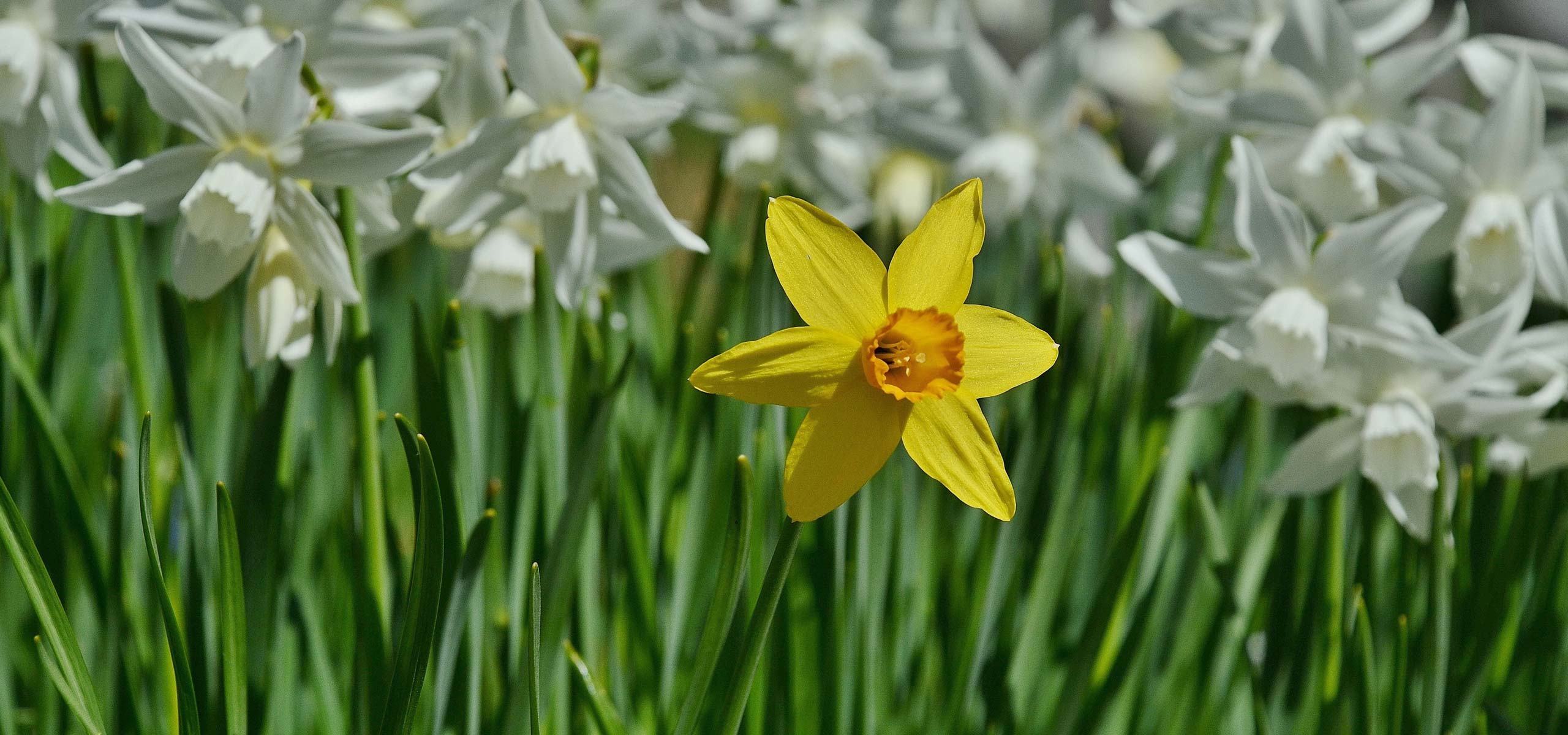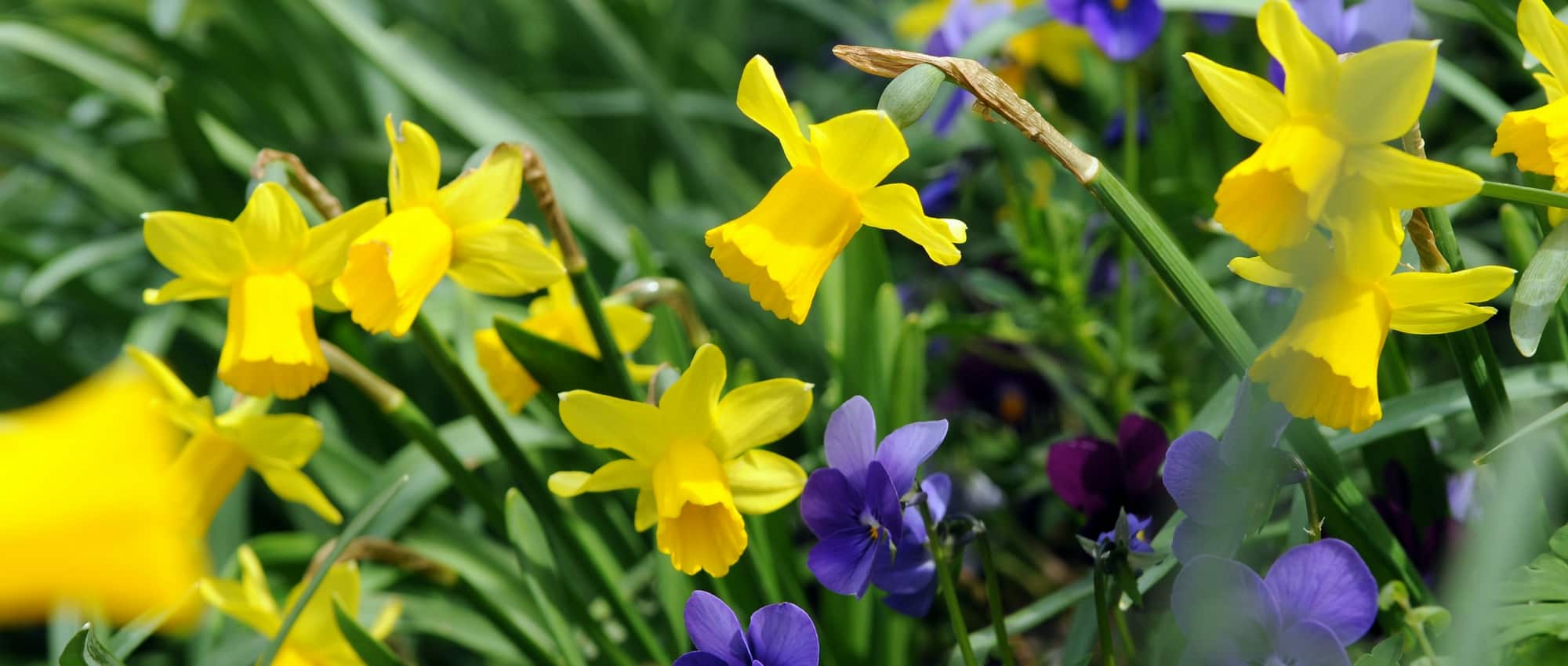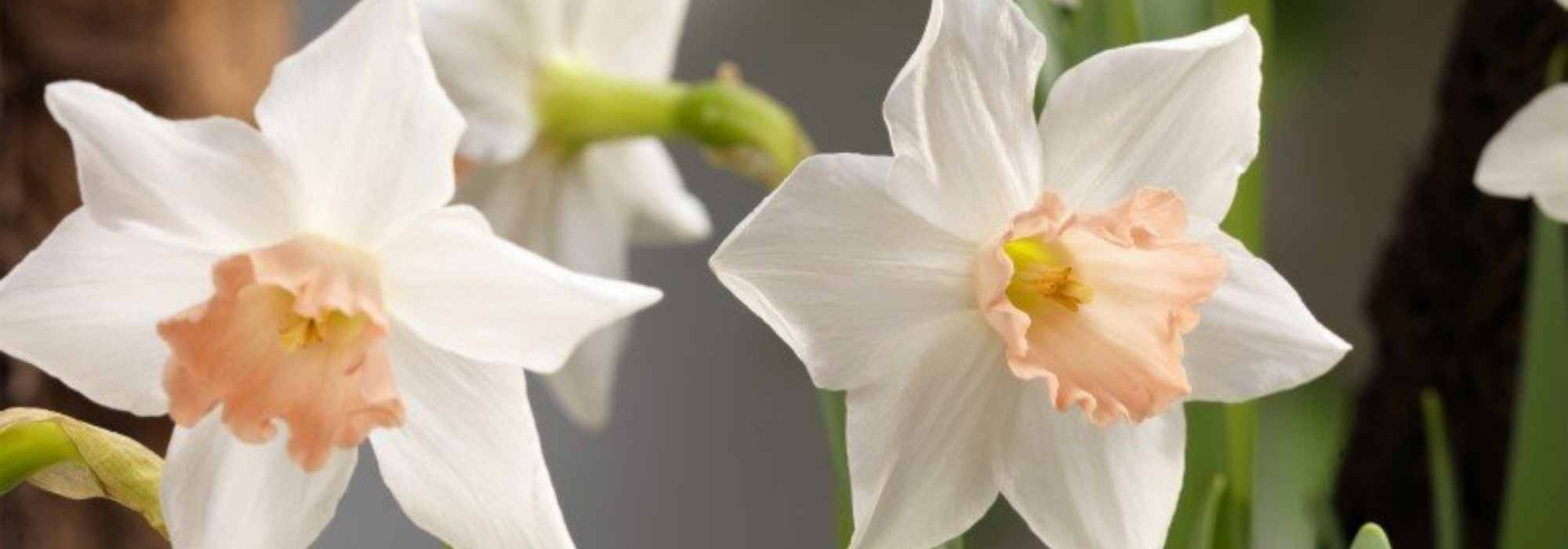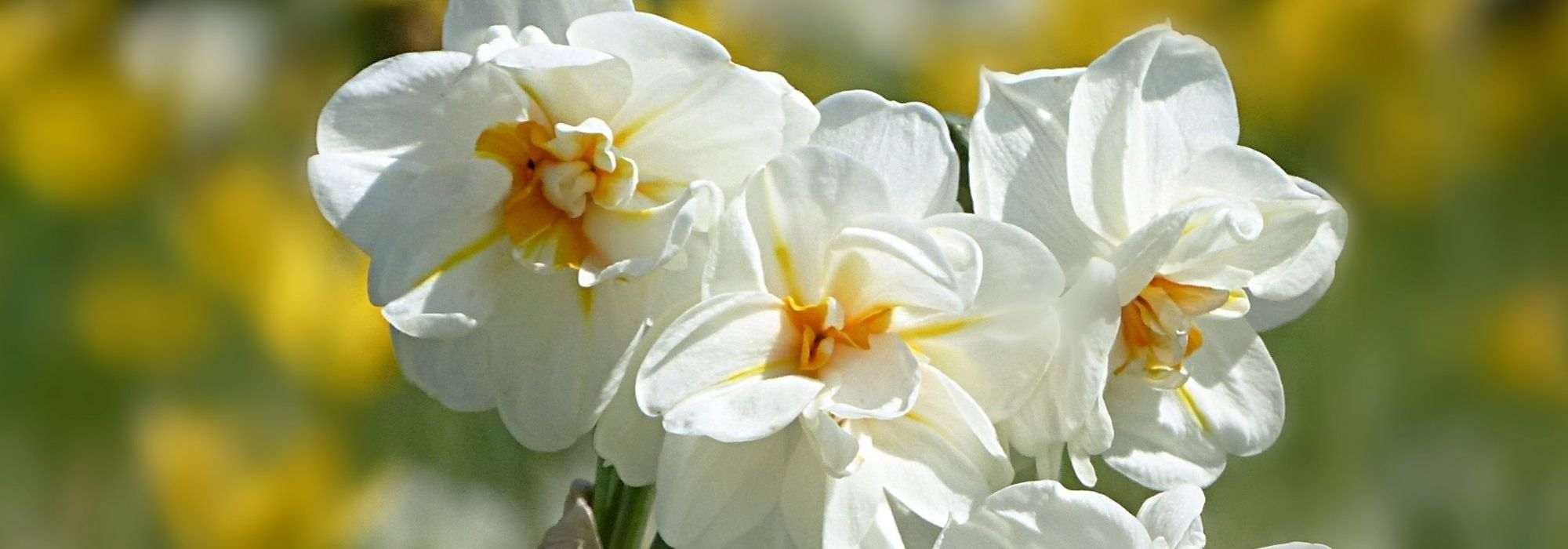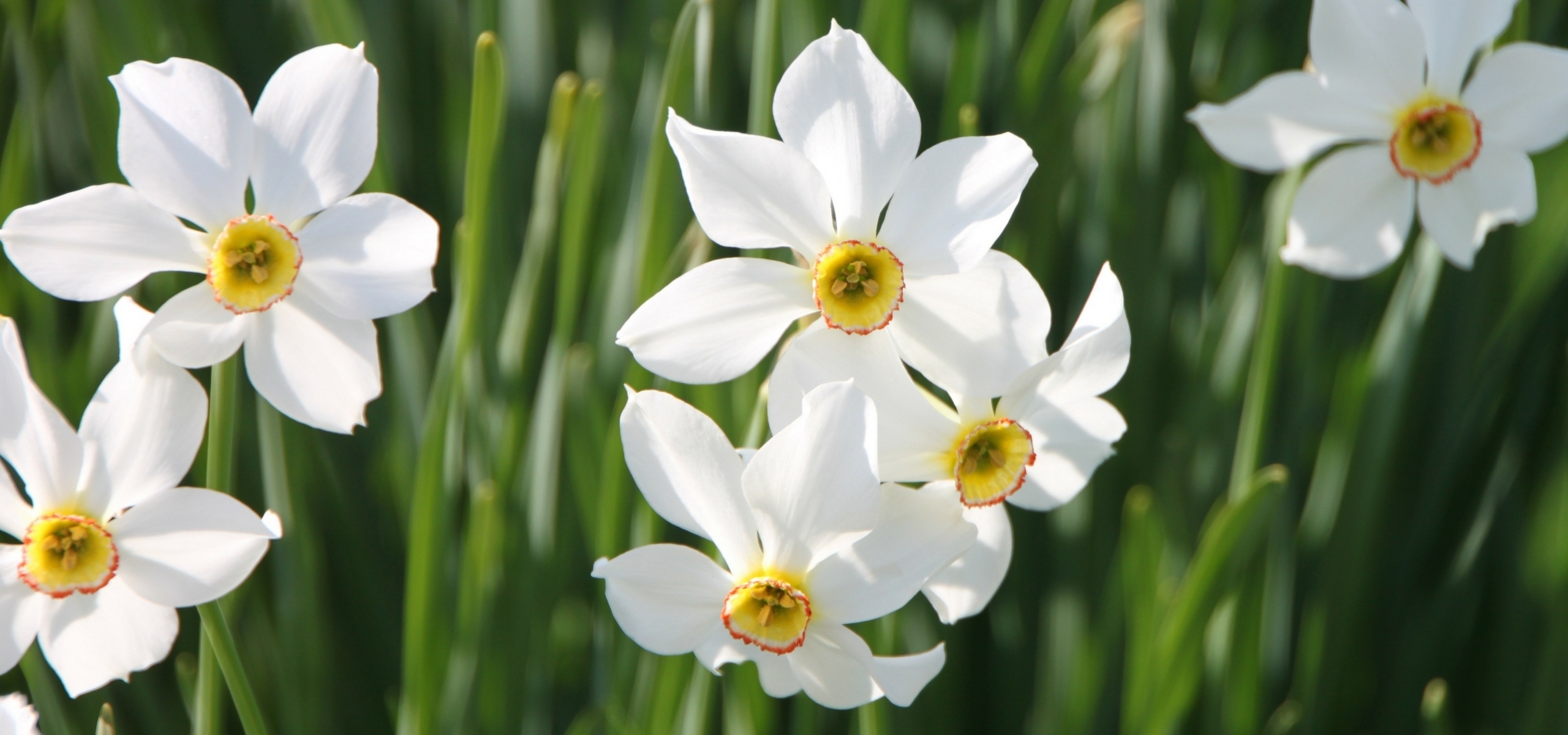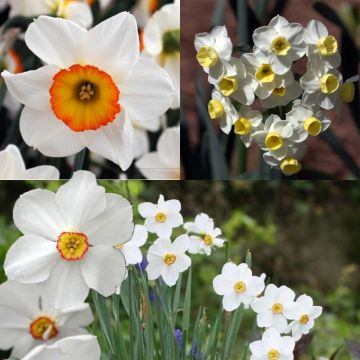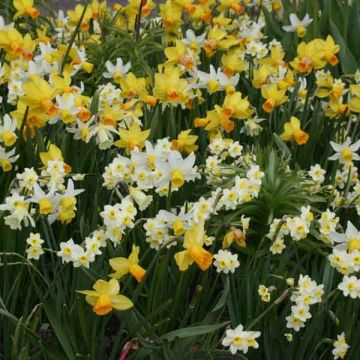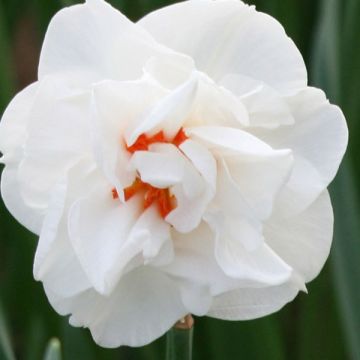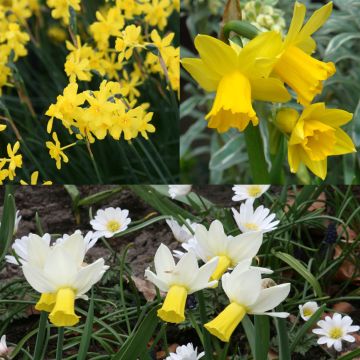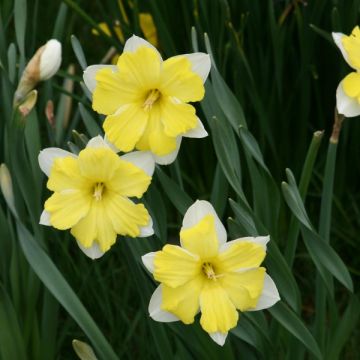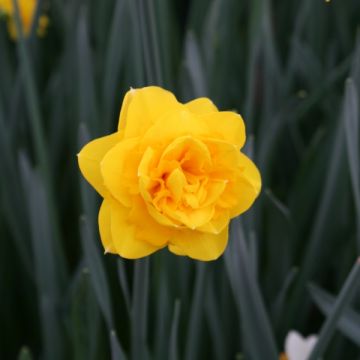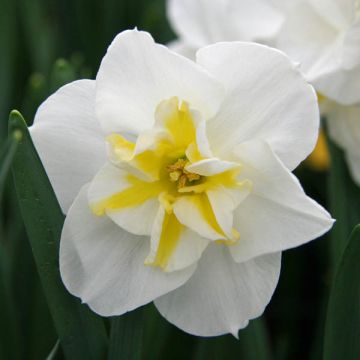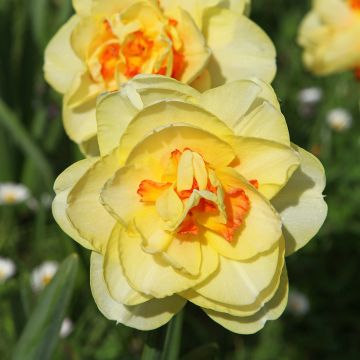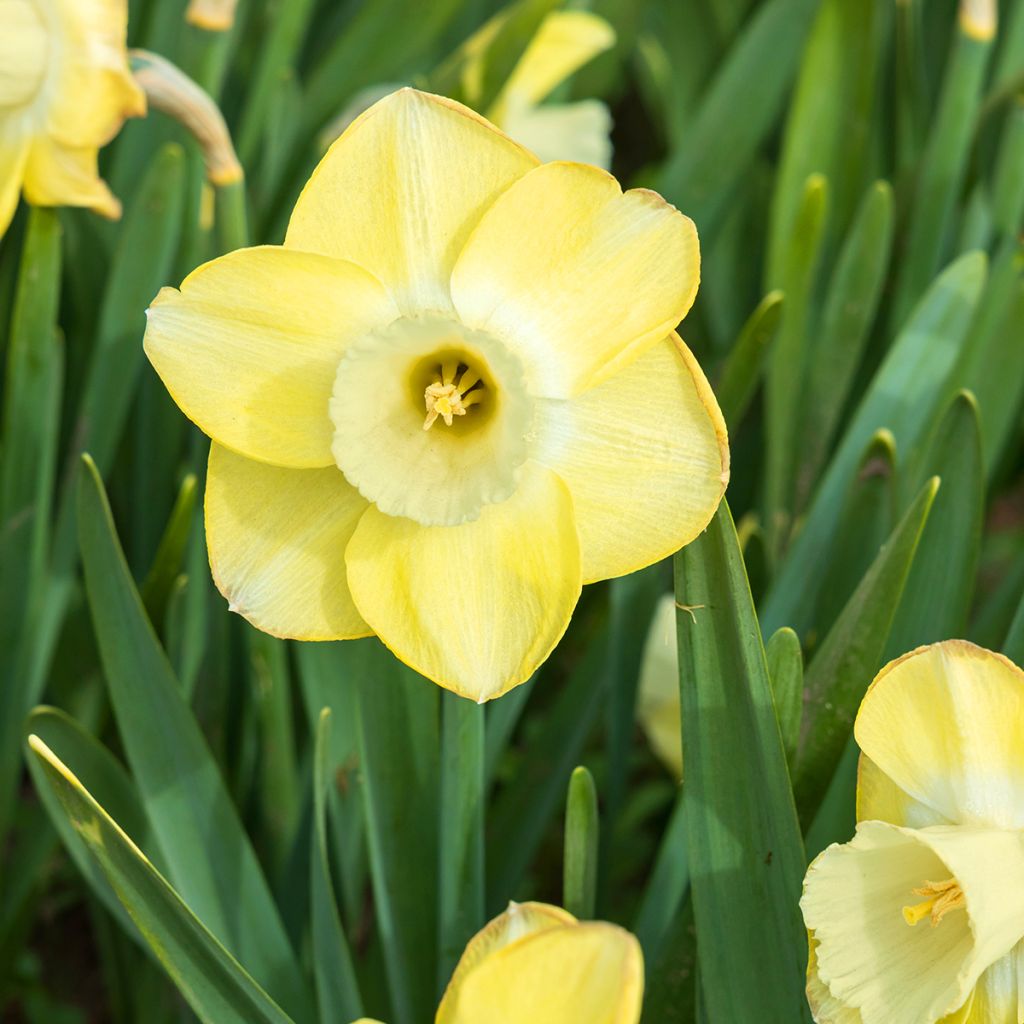

Narcissus Sabatini - Narcisse, Jonquille
Narcissus Sabatini
Narcissus Sabatini
Daffodil, Narcissus, Jonquil
Special offer!
Receive a €20 voucher for any order over €90 (excluding delivery costs, credit notes, and plastic-free options)!
1- Add your favorite plants to your cart.
2- Once you have reached €90, confirm your order (you can even choose the delivery date!).
3- As soon as your order is shipped, you will receive an email containing your voucher code, valid for 3 months (90 days).
Your voucher is unique and can only be used once, for any order with a minimum value of €20, excluding delivery costs.
Can be combined with other current offers, non-divisible and non-refundable.
Home or relay delivery (depending on size and destination)
Schedule delivery date,
and select date in basket
This plant carries a 6 months recovery warranty
More information
We guarantee the quality of our plants for a full growing cycle, and will replace at our expense any plant that fails to recover under normal climatic and planting conditions.
Would this plant suit my garden?
Set up your Plantfit profile →
Description
The Narcissus 'Sabatini' is a refined daffodil variety, prized for its large 11 cm diameter lemon-yellow flowers adorned with a distinctive white halo that accentuates their colour around the frilly crown. With its upright and elegant habit, this bulbous plant is an excellent choice for borders, rockeries, container planting, or for naturalising in meadows. It makes a superb cut flower and is an easy-to-grow plant, with short sturdy stems that withstand wind.
The Narcissus 'Sabatini' is a horticultural cultivar belonging to the Amaryllidaceae family, classified in Division 1 of daffodils by the Royal Horticultural Society, characterised by long-trumpeted flowers. It was hybridised by C.A.J. van der Wereld in the Netherlands and registered in 2014 by World Flower. This cultivar is the result of cross-breeding where the female parent is 'Primeur', while the male parent remains unknown. Compared to the type species, the 'Sabatini' is distinguished by its 11 cm diameter flowers, with a shiny greenish-yellow perianth and a 40 mm-long, also greenish-yellow, funnel-shaped crown featuring a crenate margin and a distinctive white halo at the base. The plant has an upright habit and moderate growth, reaching a height of 35 to 50 cm in open ground. In cultivation, it develops a compact clump with a spread of 10 to 20 cm. The plant produces offsets, allowing for gradual naturalisation over the years. Flowering occurs in April. The foliage is deciduous, formed of linear, green leaves that emerge in spring and wither after flowering. The 'Sabatini' was named in honour of the Italian writer Rafael Sabatini, famous for his adventure novels, reflecting the bold character of this daffodil variety. With its sunny glow softened by a subtle white halo, the Narcissus 'Sabatini' brings a touch of gentle light to early spring. It pairs wonderfully with bluish grape hyacinths or Siberian squills which contrast with its lemon-yellow robe while sharing the same requirements for light and well-drained soil. Planted en masse under deciduous bushes or at the foot of hedges, it elegantly accompanies the burgeoning spring garden. In pots on a patio or balcony, it reveals its full finesse when paired with the Tulip 'Spring Green' or the pearly elegance of Narcissus 'Thalia'.
For cut flower arrangements: we advise against mixing daffodils with other flowers, particularly tulips, as the stems contain a substance that causes other flowers to wilt quickly. This detrimental effect can be attenuated by dipping the cut ends of the daffodil stems in hot water for 1 to 2 minutes.
Plant habit
Flowering
Foliage
Botanical data
Narcissus
Sabatini
Amaryllidaceae
Daffodil, Narcissus, Jonquil
Cultivar or hybrid
Planting and care
Daffodils flower from March to May and return each year. Very easy to grow, they thrive equally well in the shade of woodland or in a sunny flowerbed. Plant them 10 cm deep and 10 cm apart. Group Narcissus Sabatini in clusters of at least 5 bulbs, in uniform colour patches or mixed. You can plant them in lawns. In this case, lift the turf, dig and loosen the soil to a depth of at least 20 cm (the height of a spade). Plant your bulbs, cover with soil and replace the turf. Choose a spot where you won't mow, as it's necessary to let the daffodil leaves wither before cutting them. It is during this time that the bulb replenishes itself and prepares for the following year's flowers. Remember to cut the flowers as soon as they have faded to avoid seed formation, which would unnecessarily exhaust the bulb.
Planting period
Intended location
Care
Planting & care advice
This item has not been reviewed yet - be the first to leave a review about it.
Similar products
Haven't found what you were looking for?
Hardiness is the lowest winter temperature a plant can endure without suffering serious damage or even dying. However, hardiness is affected by location (a sheltered area, such as a patio), protection (winter cover) and soil type (hardiness is improved by well-drained soil).
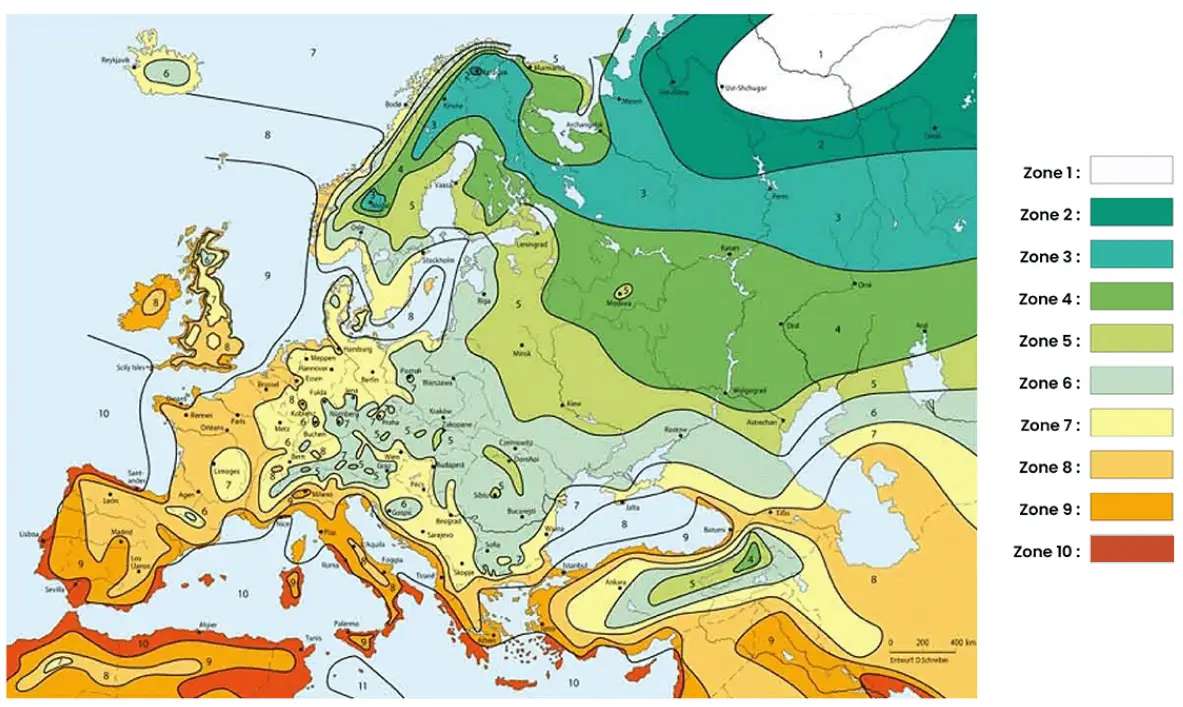
Photo Sharing Terms & Conditions
In order to encourage gardeners to interact and share their experiences, Promesse de fleurs offers various media enabling content to be uploaded onto its Site - in particular via the ‘Photo sharing’ module.
The User agrees to refrain from:
- Posting any content that is illegal, prejudicial, insulting, racist, inciteful to hatred, revisionist, contrary to public decency, that infringes on privacy or on the privacy rights of third parties, in particular the publicity rights of persons and goods, intellectual property rights, or the right to privacy.
- Submitting content on behalf of a third party;
- Impersonate the identity of a third party and/or publish any personal information about a third party;
In general, the User undertakes to refrain from any unethical behaviour.
All Content (in particular text, comments, files, images, photos, videos, creative works, etc.), which may be subject to property or intellectual property rights, image or other private rights, shall remain the property of the User, subject to the limited rights granted by the terms of the licence granted by Promesse de fleurs as stated below. Users are at liberty to publish or not to publish such Content on the Site, notably via the ‘Photo Sharing’ facility, and accept that this Content shall be made public and freely accessible, notably on the Internet.
Users further acknowledge, undertake to have ,and guarantee that they hold all necessary rights and permissions to publish such material on the Site, in particular with regard to the legislation in force pertaining to any privacy, property, intellectual property, image, or contractual rights, or rights of any other nature. By publishing such Content on the Site, Users acknowledge accepting full liability as publishers of the Content within the meaning of the law, and grant Promesse de fleurs, free of charge, an inclusive, worldwide licence for the said Content for the entire duration of its publication, including all reproduction, representation, up/downloading, displaying, performing, transmission, and storage rights.
Users also grant permission for their name to be linked to the Content and accept that this link may not always be made available.
By engaging in posting material, Users consent to their Content becoming automatically accessible on the Internet, in particular on other sites and/or blogs and/or web pages of the Promesse de fleurs site, including in particular social pages and the Promesse de fleurs catalogue.
Users may secure the removal of entrusted content free of charge by issuing a simple request via our contact form.
The flowering period indicated on our website applies to countries and regions located in USDA zone 8 (France, the United Kingdom, Ireland, the Netherlands, etc.)
It will vary according to where you live:
- In zones 9 to 10 (Italy, Spain, Greece, etc.), flowering will occur about 2 to 4 weeks earlier.
- In zones 6 to 7 (Germany, Poland, Slovenia, and lower mountainous regions), flowering will be delayed by 2 to 3 weeks.
- In zone 5 (Central Europe, Scandinavia), blooming will be delayed by 3 to 5 weeks.
In temperate climates, pruning of spring-flowering shrubs (forsythia, spireas, etc.) should be done just after flowering.
Pruning of summer-flowering shrubs (Indian Lilac, Perovskia, etc.) can be done in winter or spring.
In cold regions as well as with frost-sensitive plants, avoid pruning too early when severe frosts may still occur.
The planting period indicated on our website applies to countries and regions located in USDA zone 8 (France, United Kingdom, Ireland, Netherlands).
It will vary according to where you live:
- In Mediterranean zones (Marseille, Madrid, Milan, etc.), autumn and winter are the best planting periods.
- In continental zones (Strasbourg, Munich, Vienna, etc.), delay planting by 2 to 3 weeks in spring and bring it forward by 2 to 4 weeks in autumn.
- In mountainous regions (the Alps, Pyrenees, Carpathians, etc.), it is best to plant in late spring (May-June) or late summer (August-September).
The harvesting period indicated on our website applies to countries and regions in USDA zone 8 (France, England, Ireland, the Netherlands).
In colder areas (Scandinavia, Poland, Austria...) fruit and vegetable harvests are likely to be delayed by 3-4 weeks.
In warmer areas (Italy, Spain, Greece, etc.), harvesting will probably take place earlier, depending on weather conditions.
The sowing periods indicated on our website apply to countries and regions within USDA Zone 8 (France, UK, Ireland, Netherlands).
In colder areas (Scandinavia, Poland, Austria...), delay any outdoor sowing by 3-4 weeks, or sow under glass.
In warmer climes (Italy, Spain, Greece, etc.), bring outdoor sowing forward by a few weeks.


































